HSBC 2011 Annual Report Download - page 35
Download and view the complete annual report
Please find page 35 of the 2011 HSBC annual report below. You can navigate through the pages in the report by either clicking on the pages listed below, or by using the keyword search tool below to find specific information within the annual report.-
 1
1 -
 2
2 -
 3
3 -
 4
4 -
 5
5 -
 6
6 -
 7
7 -
 8
8 -
 9
9 -
 10
10 -
 11
11 -
 12
12 -
 13
13 -
 14
14 -
 15
15 -
 16
16 -
 17
17 -
 18
18 -
 19
19 -
 20
20 -
 21
21 -
 22
22 -
 23
23 -
 24
24 -
 25
25 -
 26
26 -
 27
27 -
 28
28 -
 29
29 -
 30
30 -
 31
31 -
 32
32 -
 33
33 -
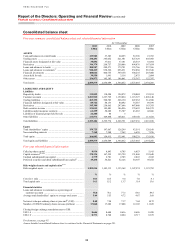 34
34 -
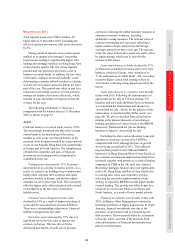 35
35 -
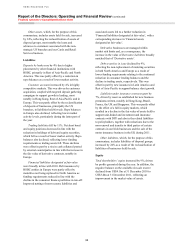 36
36 -
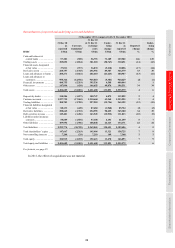 37
37 -
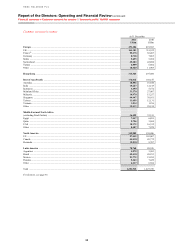 38
38 -
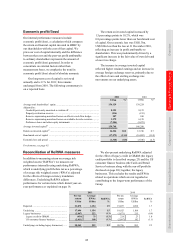 39
39 -
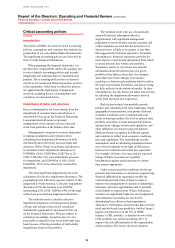 40
40 -
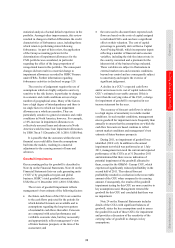 41
41 -
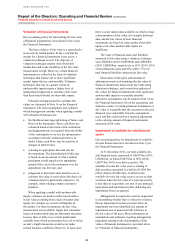 42
42 -
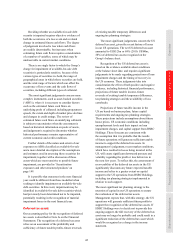 43
43 -
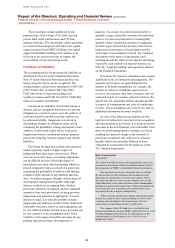 44
44 -
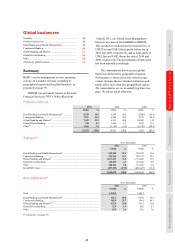 45
45 -
 46
46 -
 47
47 -
 48
48 -
 49
49 -
 50
50 -
 51
51 -
 52
52 -
 53
53 -
 54
54 -
 55
55 -
 56
56 -
 57
57 -
 58
58 -
 59
59 -
 60
60 -
 61
61 -
 62
62 -
 63
63 -
 64
64 -
 65
65 -
 66
66 -
 67
67 -
 68
68 -
 69
69 -
 70
70 -
 71
71 -
 72
72 -
 73
73 -
 74
74 -
 75
75 -
 76
76 -
 77
77 -
 78
78 -
 79
79 -
 80
80 -
 81
81 -
 82
82 -
 83
83 -
 84
84 -
 85
85 -
 86
86 -
 87
87 -
 88
88 -
 89
89 -
 90
90 -
 91
91 -
 92
92 -
 93
93 -
 94
94 -
 95
95 -
 96
96 -
 97
97 -
 98
98 -
 99
99 -
 100
100 -
 101
101 -
 102
102 -
 103
103 -
 104
104 -
 105
105 -
 106
106 -
 107
107 -
 108
108 -
 109
109 -
 110
110 -
 111
111 -
 112
112 -
 113
113 -
 114
114 -
 115
115 -
 116
116 -
 117
117 -
 118
118 -
 119
119 -
 120
120 -
 121
121 -
 122
122 -
 123
123 -
 124
124 -
 125
125 -
 126
126 -
 127
127 -
 128
128 -
 129
129 -
 130
130 -
 131
131 -
 132
132 -
 133
133 -
 134
134 -
 135
135 -
 136
136 -
 137
137 -
 138
138 -
 139
139 -
 140
140 -
 141
141 -
 142
142 -
 143
143 -
 144
144 -
 145
145 -
 146
146 -
 147
147 -
 148
148 -
 149
149 -
 150
150 -
 151
151 -
 152
152 -
 153
153 -
 154
154 -
 155
155 -
 156
156 -
 157
157 -
 158
158 -
 159
159 -
 160
160 -
 161
161 -
 162
162 -
 163
163 -
 164
164 -
 165
165 -
 166
166 -
 167
167 -
 168
168 -
 169
169 -
 170
170 -
 171
171 -
 172
172 -
 173
173 -
 174
174 -
 175
175 -
 176
176 -
 177
177 -
 178
178 -
 179
179 -
 180
180 -
 181
181 -
 182
182 -
 183
183 -
 184
184 -
 185
185 -
 186
186 -
 187
187 -
 188
188 -
 189
189 -
 190
190 -
 191
191 -
 192
192 -
 193
193 -
 194
194 -
 195
195 -
 196
196 -
 197
197 -
 198
198 -
 199
199 -
 200
200 -
 201
201 -
 202
202 -
 203
203 -
 204
204 -
 205
205 -
 206
206 -
 207
207 -
 208
208 -
 209
209 -
 210
210 -
 211
211 -
 212
212 -
 213
213 -
 214
214 -
 215
215 -
 216
216 -
 217
217 -
 218
218 -
 219
219 -
 220
220 -
 221
221 -
 222
222 -
 223
223 -
 224
224 -
 225
225 -
 226
226 -
 227
227 -
 228
228 -
 229
229 -
 230
230 -
 231
231 -
 232
232 -
 233
233 -
 234
234 -
 235
235 -
 236
236 -
 237
237 -
 238
238 -
 239
239 -
 240
240 -
 241
241 -
 242
242 -
 243
243 -
 244
244 -
 245
245 -
 246
246 -
 247
247 -
 248
248 -
 249
249 -
 250
250 -
 251
251 -
 252
252 -
 253
253 -
 254
254 -
 255
255 -
 256
256 -
 257
257 -
 258
258 -
 259
259 -
 260
260 -
 261
261 -
 262
262 -
 263
263 -
 264
264 -
 265
265 -
 266
266 -
 267
267 -
 268
268 -
 269
269 -
 270
270 -
 271
271 -
 272
272 -
 273
273 -
 274
274 -
 275
275 -
 276
276 -
 277
277 -
 278
278 -
 279
279 -
 280
280 -
 281
281 -
 282
282 -
 283
283 -
 284
284 -
 285
285 -
 286
286 -
 287
287 -
 288
288 -
 289
289 -
 290
290 -
 291
291 -
 292
292 -
 293
293 -
 294
294 -
 295
295 -
 296
296 -
 297
297 -
 298
298 -
 299
299 -
 300
300 -
 301
301 -
 302
302 -
 303
303 -
 304
304 -
 305
305 -
 306
306 -
 307
307 -
 308
308 -
 309
309 -
 310
310 -
 311
311 -
 312
312 -
 313
313 -
 314
314 -
 315
315 -
 316
316 -
 317
317 -
 318
318 -
 319
319 -
 320
320 -
 321
321 -
 322
322 -
 323
323 -
 324
324 -
 325
325 -
 326
326 -
 327
327 -
 328
328 -
 329
329 -
 330
330 -
 331
331 -
 332
332 -
 333
333 -
 334
334 -
 335
335 -
 336
336 -
 337
337 -
 338
338 -
 339
339 -
 340
340 -
 341
341 -
 342
342 -
 343
343 -
 344
344 -
 345
345 -
 346
346 -
 347
347 -
 348
348 -
 349
349 -
 350
350 -
 351
351 -
 352
352 -
 353
353 -
 354
354 -
 355
355 -
 356
356 -
 357
357 -
 358
358 -
 359
359 -
 360
360 -
 361
361 -
 362
362 -
 363
363 -
 364
364 -
 365
365 -
 366
366 -
 367
367 -
 368
368 -
 369
369 -
 370
370 -
 371
371 -
 372
372 -
 373
373 -
 374
374 -
 375
375 -
 376
376 -
 377
377 -
 378
378 -
 379
379 -
 380
380 -
 381
381 -
 382
382 -
 383
383 -
 384
384 -
 385
385 -
 386
386 -
 387
387 -
 388
388 -
 389
389 -
 390
390 -
 391
391 -
 392
392 -
 393
393 -
 394
394 -
 395
395 -
 396
396 -
 397
397 -
 398
398 -
 399
399 -
 400
400 -
 401
401 -
 402
402 -
 403
403 -
 404
404 -
 405
405 -
 406
406 -
 407
407 -
 408
408 -
 409
409 -
 410
410 -
 411
411 -
 412
412 -
 413
413 -
 414
414 -
 415
415 -
 416
416 -
 417
417 -
 418
418 -
 419
419 -
 420
420 -
 421
421 -
 422
422 -
 423
423 -
 424
424 -
 425
425 -
 426
426 -
 427
427 -
 428
428 -
 429
429 -
 430
430 -
 431
431 -
 432
432 -
 433
433 -
 434
434 -
 435
435 -
 436
436 -
 437
437 -
 438
438 -
 439
439 -
 440
440
 |
 |

33
Overview Operating & Financial Review Corporate Governance Financial Statements Shareholder Information
Movement in 2011
Total reported assets were US$2.6 trillion, 4%
higher than at 31 December 2010. Excluding the
effect of currency movements, total assets increased
by 6%.
Strong growth in deposits across most regions
enabled us to support our customers’ borrowing
requirements, leading to significantly higher term
lending and mortgage balances in Hong Kong, Rest
of Asia-Pacific and the UK. Our strong liquidity
position and risk preference also led to a rise in
balances at central banks. In addition, the fair value
of derivative contracts increased markedly, as the
deteriorating economic outlook resulted in a decline
in yield curves in major currencies during the latter
part of the year. This growth was offset in part by a
reduction in net trading assets as we took action to
manage our balance sheet more effectively, which
resulted in year-end balances being lower than the
average for the year.
The following commentary is based on a
comparison with the balance sheet at 31 December
2010 as shown on page 35.
Assets
Cash and balances at central banks rose by 129%.
The increasingly prominent role played by western
central banks in the functioning of the money
markets as well as our own risk preference as the
eurozone crisis deepened resulted in a larger portion
of our excess liquidity being held with central banks
in Europe and in North America. The redeployment
of funds from maturities and sales of financial
investments and strong growth in deposits also
contributed to the rise.
Trading assets decreased by 13%. Economic
uncertainty led to a decline in market activity. As a
result, we reduced our holdings of government and
highly-rated corporate debt securities and equity
positions, notably in Europe, and did not replace
maturities in our reverse repo book. This was partly
offset by higher cash collateral posted with external
counterparties as the fair value of derivative
liabilities rose.
Financial assets designated at fair value
declined by 14% as a result of improved netting of
assets and the associated non-recourse liabilities.
There was a corresponding reduction in ‘Financial
liabilities designated at fair value’.
Derivative assets increased by 35%, due to a
significant rise in the fair value of interest rate
contracts in Europe. This was driven by the
downward movements of yield curves in major
currencies following the global monetary response to
continued economic weakness, including
quantitative easing measures. The notional value of
contracts outstanding also increased, reflecting a
higher number of open interest rate and foreign
exchange transactions than a year ago. The increase
in the fair value of derivative assets was partly offset
by higher netting, which rose in line with the
increase in fair values.
Loans and advances to banks declined by 11%,
as funds from maturing term loans and reverse repo
balances, notably in Europe, were redeployed to
‘Cash and balances at central banks’. This was offset
in part by higher central bank lending in Rest of
Asia-Pacific, reflecting strong deposit growth in the
region.
Loans and advances to customers were broadly
in line with 2010. Following the announcement of
agreements for the sale of 195 non-strategic US
branches and our Cards and Retail Services business,
we reclassified the related loans and advances to
‘Assets held for sale’, which, for the purpose of this
commentary, is reported within ‘Other assets’ (see
page 86). We also reclassified loans and advances
relating to the planned disposals of non-strategic
banking operations in Central America, the RBWM
business in Thailand and our private banking
business in Japan to ‘Assets held for sale’.
Excluding the above reclassifications, loans and
advances to customers increased by US$30bn
compared with 2010, although the pace of growth
slowed in the second half of 2011. This reflected
targeted loan growth in our CMB and GB&M
businesses in Hong Kong and Rest of Asia-Pacific as
the economic environment improved and trade flows
increased, together with growth as a result of lending
campaigns in CMB in the UK and Latin America.
Residential mortgage balances also rose significantly
in the UK, Hong Kong and Rest of Asia-Pacific due
to a strong sales focus and competitive pricing,
reflecting the successful implementation of our
strategy to reposition RBWM towards higher quality
secured lending. This growth was offset in part by a
reduction in reverse repo balances in Europe and
North America, as a result of lower market activity.
Financial investments were broadly in line with
2010, as Balance Sheet Management continued to
hold large portfolios of highly liquid assets. In North
America, financial investments rose due to the
purchases of government and government agency
debt securities. This was partly offset by a reduction
in Europe, where a portion of the proceeds from
sales and maturities of financial investments were
placed at central banks.
